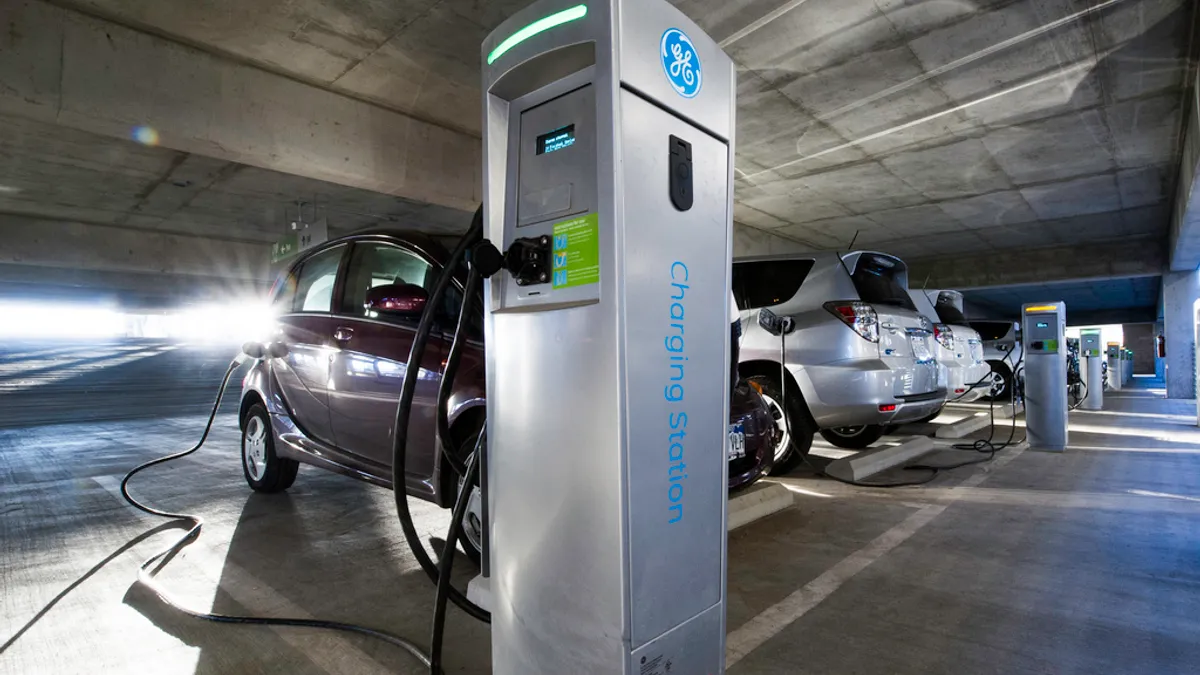Editor's Note: The following is a guest post written by Michael Shepard. Shepard is the chairman of energy research and advisory firm E Source. This article is the first in a five-part series from Shepard on the opportunity for utilities in electric vehicles. If you are interested in submitting a guest post, please review these guidelines.
Electric transportation is one of the biggest strategic opportunities utilities have had in nearly a century.
How big? America spends roughly equal amounts on gasoline and electricity—about $400 billion a year for each. If electricity could capture the entire fueling market for light duty vehicles, power sales would rise by about 25%, adding roughly $100 billion per year to electric utility revenues and saving car drivers about $300 billion a year. [1] That’s a great deal for consumers and a big, hairy, audacious goal that should capture the attention of utility executives struggling with flat loads and profits.
Revenue growth is not the only benefit EVs offer to utilities. EVs also put downward pressure on rates, to the benefit of all utility customers. Why? Because most charging takes place during off peak hours and EVs increase electricity sales without requiring added infrastructure (see graph below). Spreading more revenue over an existing asset base lowers the price utilities have to charge to cover their costs. [2]
One of the greatest benefits of EVs to utilities in the medium term will be the grid services they can provide. Utilities will increasingly need flexible, dispatchable loads and storage that can smooth out fluctuations from intermittent renewables and keep the grid stable. Electric cars can be taught to respond instantly to calls from grid operators to shed or increase load, store excess generation for later use, send stored energy into the grid, and provide frequency regulation and other ancillary services. There’s a virtuous circle building here, with EVs enabling the grid to handle more renewable energy, which in turn makes EVs more competitive in a carbon-constrained economy.
Of course, electricity will not displace gasoline completely or overnight. But innovations that appear small at first can capture markets with remarkable speed when driven by organizations with clear goals and compelling vision. Consider how quickly Netflix displaced Blockbuster, how digital imaging brought down Kodak, and how Uber is challenging the legacy taxi business.
Given the great promise of EVs for utilities, why have they been slow to promote them? One reason is that they assume this is the role of the automakers. But car companies are conflicted about EVs. They have a wide portfolio of models to sell, nearly all of them fueled by petroleum. Much of their profit—reportedly up to 90% for Ford Motor Co., for instance—comes from pickup trucks, which are not yet widely available with electric drive.
Automakers have to cannibalize their core business to push EVs. Few industries have the vision or stomach to embrace such high stakes reinvention.
Another reason utilities have been slow to act on EVs is that they are culturally accustomed to playing defense. When faced with disruptive innovations, such as rooftop PV, many utilities attempt to block or stall their advance, rather than finding ways to grow them as part of their business strategy (or they are blocked from innovating by regulators). This defensive mindset has blinded utilities to the offensive opportunity that lies before them—to capture a large chunk of a $400 billion U.S. gasoline market from the oil companies.
How refreshing it would be for utilities to play the disruptive innovator for a change. It’s what they were 100 years ago—the drivers of modernity, innovation, and progress. They can reclaim that legacy by becoming aggressive champions for a 21st century transformation of the transportation sector from petroleum to electricity.
The steps that utilities have taken thus far to promote EVs are quite modest. Many provide basic EV information on their websites and at community events. They do load research to understand grid impacts. Some have invested in public charging infrastructure. Some rebate chargers at customer homes and facilities. A handful incent the purchase of the cars themselves. Many are buying EVs for utility fleets. These are all good steps, but the general tenor is quite passive—let’s wait for the load to come to us.
What’s needed is a far more proactive approach that starts by addressing a primary problem—most consumers barely know that EVs exist. UC Davis EV researcher Ken Kurani has found that only 7% of households in leading markets of California and Oregon have actively shopped for an EV. The share is half that in the northeastern states.
It’s in utilities’ interests to raise consumer awareness and excitement about these vehicles. There are various ways to do this. One option would be to build a coalition of interested stakeholders to launch the electric transport equivalent of a “Got Milk” campaign. This awareness building should be coupled with large and sustained programs to remove barriers to and provide incentives for consumers and businesses to adopt EVs. Midstream programs aimed at educating and motivating dealers and car sales staff may be particularly critical. Bulk discount programs arranged in conjunction with auto manufacturers and dealers have been shown in some instances to increase sales volumes four to five fold. And utilities need to get more active in promoting public policies that encourage the transition to electric transportation.
Skeptics may ask, “Why the rush?” The answer is that timing is key in business, and some opportunities don’t last forever. A variety of factors make the next several years a particularly critical time for utilities to push hard on electric transportation. If they fail to act swiftly and decisively, this window of opportunity could close, as we will discuss in part 2 of this series—coming next week.
[1] EIA data shows 3.7 billion MWh sold per year in the U.S. Data from the U.S. Federal Highway Administration shows that vehicles in the U.S. travel about 3 trillion miles/year. Many EVs currently get 3-4 miles/kWh; less when using heat or air conditioning. Assuming an average value of 3 miles per kWh and 3 trillion vehicle miles/year, that’s 1 trillion kWh to fuel all U.S. vehicle miles with electricity. Assuming an average rate of $0.10 per kWh, this yields added electricity sales of $100 billion.
[2] A statewide analysis for California concluded that even a high level of “EV adoption does not lead to dramatic increases in feeder or substation costs,” even if EVs cluster in certain neighborhoods and even when households are not on TOU rates. A recent study by all three California investor-owned electric utilities (SDG&E, Pacific Gas and Electric, and Southern California Edison) found that only 0.1% of the roughly 100,000 plug-in EVs in California required a service line or distribution service upgrade, and 80% of those upgrades were minimal. The study concluded that “additional revenue from EV charging exceeds the marginal costs to deliver electricity to the customer, providing positive net revenues that put downward pressure on rates.”














